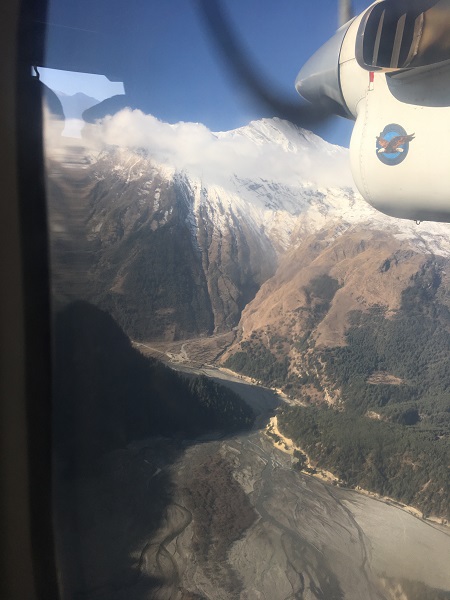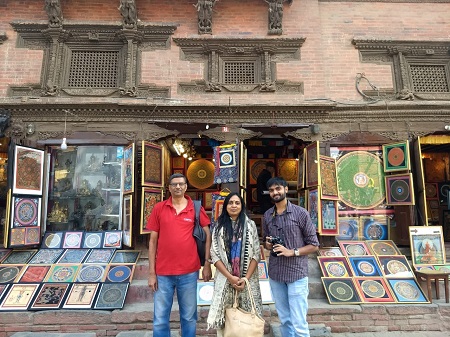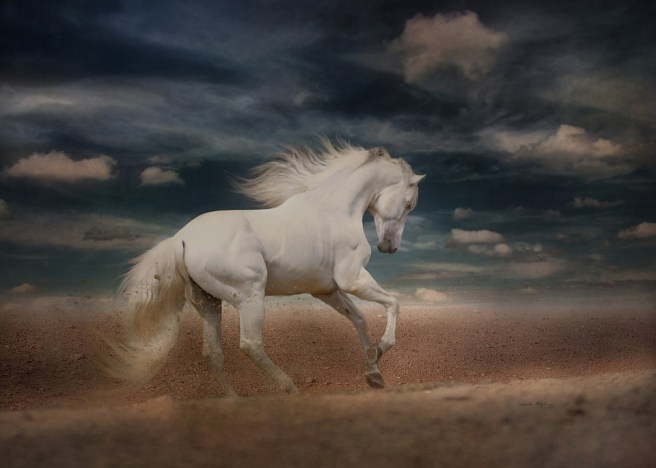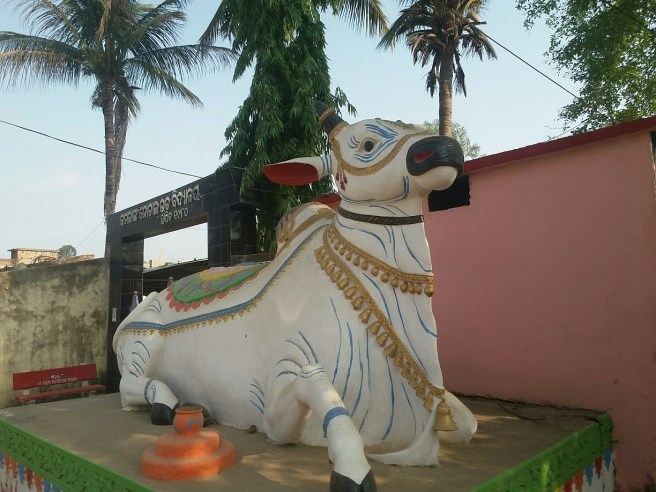May 29th is Nepal’s Republic Day. To mark this upcoming day, here is my friend Anuradha’s travelogue, which could help those planning a trip to this amazing country. Meena.
We planned a 10-day trip and booked air tickets much in advance by Nepal Air direct flight from Bangalore to Kathmandu @ Rs.14K /ticket for round trip. With Kathmandu as a base, we took a package @ Rs.1.3 lacs for 3 pax which included flight tickets from Pokhara to Jomsom round trip, a private car with driver, and accommodations in 4* plus hotels for 9 nights.
Day-1: We were off! Reached Kathmandu by evening.
Day-2 (Friday): Kathmandu local city sightseeing -Swyambhunath Stupa, Darbar squares of Kathmandu & Patan, Pashupathinath Temple. The ‘Living Goddess’ of Darbar square, hand-made idols of brass and metals at Patan, ancient Pashupathinath Temple were the most memorable.
Day-3 (Saturday): Early morning drive to Chitwan—a distance of around 120 Kms. On the way, there is a popular cable car ride to Mano Kaamana temple. Saturday being a state holiday, there were long queue. Though we spent half day on the whole process of cable car ride, it was worth it. Reached Chitwan around 5.30 pm and checked in to Hotel Green Park. As it was already dark, no activity was scheduled. We hired an auto and went around Chitwan and nearby villages, spoke to local people, did some food shopping. Annual Elephant festival was happening nearby and we dropped in. We enjoyed watching elephant racing and el ephant Polo.
ephant Polo.
Day 4 (Sunday): Chitwan National Park visit, Elephant safari, Boating, bird watching, visit to Elephant Breeding centre and cultural evening. Rhinoceros is a star of Chitwan. There are an estimated 600+ plus Rhinos here. Elephant Safari of around 1.5 hours across a river and inside the jungle was an amazing new experience. We could see Rhinos, Deer, Crocodiles and rare birds.
 Bird watching from a boat across River Budiramati was amazing. Jungle walk with guide across National Park, viewing rare Himalayan medicinal plants, creepers, birds was truly educational. We were excited to see a just-born baby elephant in the breeding centre.
Bird watching from a boat across River Budiramati was amazing. Jungle walk with guide across National Park, viewing rare Himalayan medicinal plants, creepers, birds was truly educational. We were excited to see a just-born baby elephant in the breeding centre.
Day 5 (Monday): Drove to Pokhara from Chitwan. Beautiful drive across rivers, valleys of Himalayan stretch. View of Dhaulagiri, Nilgiri and Annapurna range of Himalayas, Matsyangadi, Sethi Gandaki and Gudi Gandaki Rivers. Compared to Kathmandu, Pokhara looked more developed with better infrastructure. Our hotel was right opposite the famous Fewa lake. Visited couple of local places in Pokhara. As it was 31st Dec, entire city was decorated and Street Festival was going on. We roamed around here and got to know about local Mela. It was indeed a memorable great experience to be in Nepal’s happening Pokhara, on the New Year eve.
 Day 6 (Tuesday): Travelled from Pokhara to Jomsom by 7.50 hrs Tara Air flight. Flight didn’t take off on scheduled time due to bad weather. Till 10.45 am, we had no idea whether flight would take off. Luckily weather cleared by 11 am and we were on the way. It was a spine-chilling experience in a 12-seater charter flight, flying at a very low height of 30 mts among Himalayan glaciers.
Day 6 (Tuesday): Travelled from Pokhara to Jomsom by 7.50 hrs Tara Air flight. Flight didn’t take off on scheduled time due to bad weather. Till 10.45 am, we had no idea whether flight would take off. Luckily weather cleared by 11 am and we were on the way. It was a spine-chilling experience in a 12-seater charter flight, flying at a very low height of 30 mts among Himalayan glaciers.
Flight landed in a small place Jomsom, surrounded by mountains. Temperature was minus (going down to -17o C). Stay was arranged in Om’s Home, a beautiful heritage hotel. Understand Amitabh Bachchan stayed in this Hotel during shooting of his movie Khuda Gawah. To our excitement, the same room was allocated to us. We quickly freshened up for a local visit around Jomsom, to a lake which was frozen and a beautiful Morpha village. Since it was off-season, not many tourists found and it was calm and heavenly. The apple-growing Morpha village was very clean and neat with wooden houses. Dining room at Hotel was kept warm by non-electrical boiler heater. Internet connectivity was very good though it is a remote place.
Day 7 (Wednesday): Mukthinath Darshan. We started around 9 a.m. from Hotel by jeep towards Mukthinath. There are no words to explain our experience of passing through the Himalayan valley. We filled our hearts and minds with the Himalayan view and took pics. We crossed Khinga, Jarkot, Kakbani villages, Kali Gandaki river and drove towards Mustang and arrived to Mukthinath base. After 30 mts trek, we reached the holy temple. Our dream of seeing god Mukthinath has come true. We bathed in icy cold holy water here. We had a very good darshan as there were no crowds, thanks to the cold.
As we had read that ‘Saligrama’ is found at Kali Gandaki river, we requested our driver to take us to the river bank . He was good enough to do so and after an hour of searching, we found a few. On the way back we bought fresh Walnuts and dried apple.
Day 8 (Thursday): Departure from Jamsom by Tara Air and back to Pokhara around 9 a.m. Full day Pokhara local visit was planned. We have covered Museum on Mountaineering-definitely worth a visit. 4.5 km boat ride in Fewa Lake was a wonderful experience.Peace Pagoda stupa at Pokhara was also interesting.
Day 9 (Friday): Sunrise view from Sarangkot is not to be missed. The view of Davalgiri and Annapurna Himalayan ranges, sun rising on these mountain ranges can’t be explained but has to be experienced. We were in no mood to leave the place and were there till 8.30 a.m. filling our eyes with mountain ranges and sun rise view. As next visit was to Nagrkot a long drive from Pokhara, we had to leave to continue the journey.
It was full-day awesome drive across river Trishooli, Sethu Gandaki. On the way, we visited an extremely old temple Changinarayan. Wooden crafts and masks are famous here. We reached Nagarkot mountain peak around 8 p.m. Our stay was arranged in Country Villa wherein each room is on a mountain edge and built in such a way that sunrise can be viewed from the room itself. The great Everest mountain ranges are visible from Nagarkot. It is better to plan for more time at this beautiful place.
Day 10 (Saturday): Morning, we checked out of the to drive towards Bhaktapur, a heritage city. Bhaktapur is famous for Thangka art and paintings. City looked red–all brick buildings without paint. We visited Darbar square of Bhaktapur, saw beautiful sculptures and heard stories behind these. We quickly finished our Bhaktapur visit so as to reach airport by 12 noon to catch our return flight.

Reached Bangalore around 5 p.m. with amazing memories of Nepal, eyes filled with Himalayan glaciers, blessings of Lord Pashupathinath and Mukthinath.
Our observation of Nepal on our 10-day tour is that people of Nepal are very proud and concerned about the Himalayas and treat their land as God’s home. Women are respected, they go all alone freely. People are sincere and happy. All the places we visited in Nepal were clean and well maintained. Rest rooms were hygienic. Garbage bins are available in most of the places and also getting cleared every now and then. Nepal is truly a worth visiting destination.
–Anuradha Nagaraj
(Trip of Dec 2018-Jan 2019).



 Day 6 (Tuesday): Travelled from Pokhara to Jomsom by 7.50 hrs Tara Air flight. Flight didn’t take off on scheduled time due to bad weather. Till 10.45 am, we had no idea whether flight would take off. Luckily weather cleared by 11 am and we were on the way. It was a spine-chilling experience in a 12-seater charter flight, flying at a very low height of 30 mts among Himalayan glaciers.
Day 6 (Tuesday): Travelled from Pokhara to Jomsom by 7.50 hrs Tara Air flight. Flight didn’t take off on scheduled time due to bad weather. Till 10.45 am, we had no idea whether flight would take off. Luckily weather cleared by 11 am and we were on the way. It was a spine-chilling experience in a 12-seater charter flight, flying at a very low height of 30 mts among Himalayan glaciers.


 (CBRTI) of the Khadi and Village Industries Commission (KVIC) provide training to not just farmers or those who wish to commercially supply honey, but also to anyone who is interested in beekeeping. They can be contacted at
(CBRTI) of the Khadi and Village Industries Commission (KVIC) provide training to not just farmers or those who wish to commercially supply honey, but also to anyone who is interested in beekeeping. They can be contacted at 
 Brilliant
Brilliant